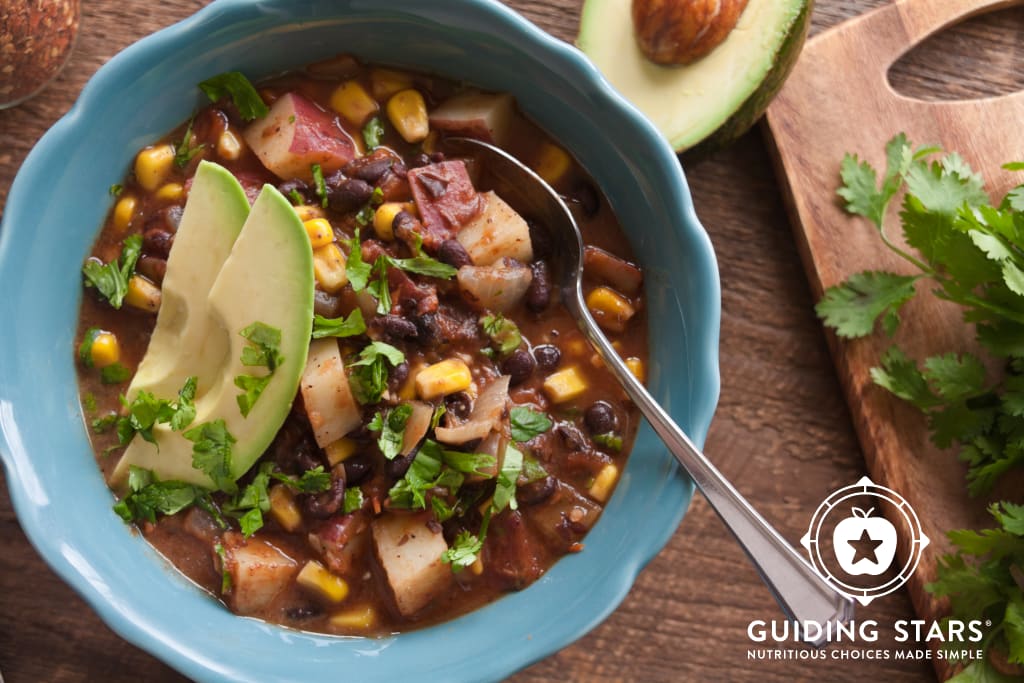Chances are you have a slow cooker, and there’s a good likelihood that you don’t use it for more than making chili or soup. That’s okay, certainly, but if that’s the limit of your slow cooking, you’re missing out on a lot of easy meal possibilities! If you are new to slow cooking or it’s been a while since your cooker found a perch on the counter at your house, check out this previous post that covers some of the basics. Would you be more adventurous if you knew how to modify traditional recipes to work in the slow cooker? If that’s your issue, this post is for you. As an author of a couple of slow cooker cookbooks, here are my best tips for solving the modification conundrum…
Quick Black Bean Mexican Soup
This soup has a tip for modifying it for the slow cooker, and it's a great recipe to apply some of the tips below.
View recipe »Find a slow cooker version that’s already created!
This first tip for modification is somewhat of a cop-out, but I will tell you that, with so many slow cooker recipes around these days, there’s bound to be something close to what you want that has already been developed. Truly, before you go to the trouble of modifying your family’s favorite scalloped potato recipe—search online for one that’s already been created, tested, and possibly reviewed by others. All you may really need to do is make it yours with a little tweak or two.
Choose a recipe that typically cooks for a long time.
Things like stews, braised meats, or bean soups are perfect candidates for the slow cooker because, well, long-and-slow cooking is what this appliance was made to do. If the regular recipes calls for an hour of stove or oven cooking, give it a good 6 on low in the slow cooker. For 2 hours of oven or stove-top cooking, bump up the slow cooker time to 8-10 hours on the low setting. Of course, do check on the progress once or twice—especially if this is a new adaptation.
Unless it’s a soup recipe, cut the liquid by about half.
You can easily leave soup recipes alone, but if you’re making anything else that has some liquid added, do reduce the amount by 30-50%. The reason for this is that liquids don’t evaporate from the slow cooker like they do in the oven or on the stove. What’s more, many foods release their own water during cooking, so in many cases, all that’s needed is a small amount of liquid (bonus points if the liquid adds flavor, too, like Worcestershire sauce or broth).
Layer the ingredients strategically.
Dense veggies take longer to cook than more delicate veggies or even meat does. Always put the ingredient that will take the longest to cook on the bottom. Often this means, carrots, turnips, and potatoes will be the first (bottom) layer, then the meat and finally the more delicate veggies such as onions, tomatoes, etc.
Milk, cream, and sour cream don’t benefit from slow cooking.
Add these dairy products during the last 30 minutes of cook time in order to prevent them from curdling or breaking down. This is an instance where getting guidance from other slow cooker recipes for a similar dish can be handy.
Add fresh herbs at the very end.
In order to preserve their fresh qualities and not cook them down to nothing, stir them in toward the end of cooking. Another option is to sprinkle fresh herbs on the finished dish as a garnish—it provides a nice touch of color and a welcome, fresh contrast to most slow-cooked dishes. A squeeze of lemon or lime juice is a nice way to add a little fresh zing to slow cooker food, too.
